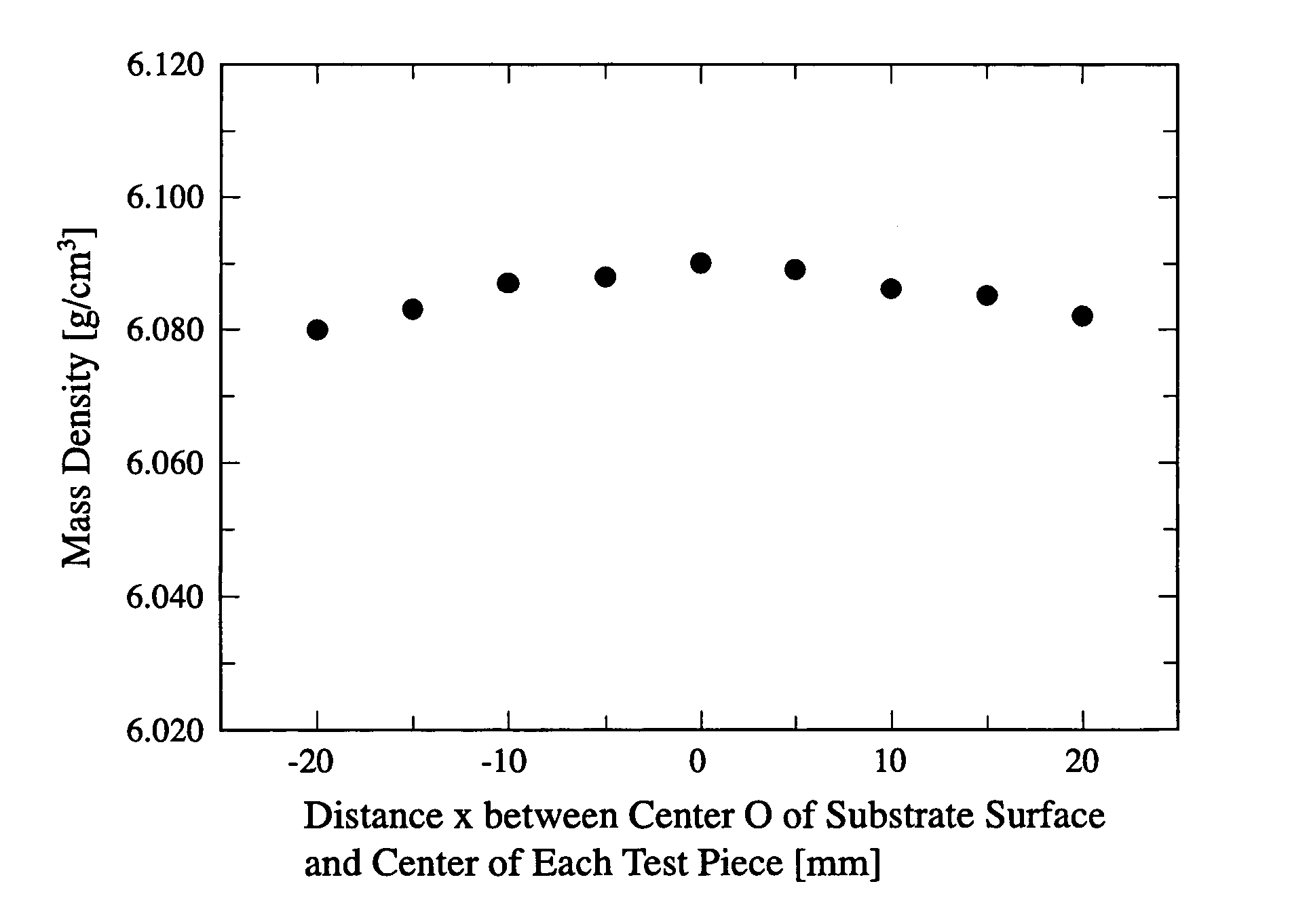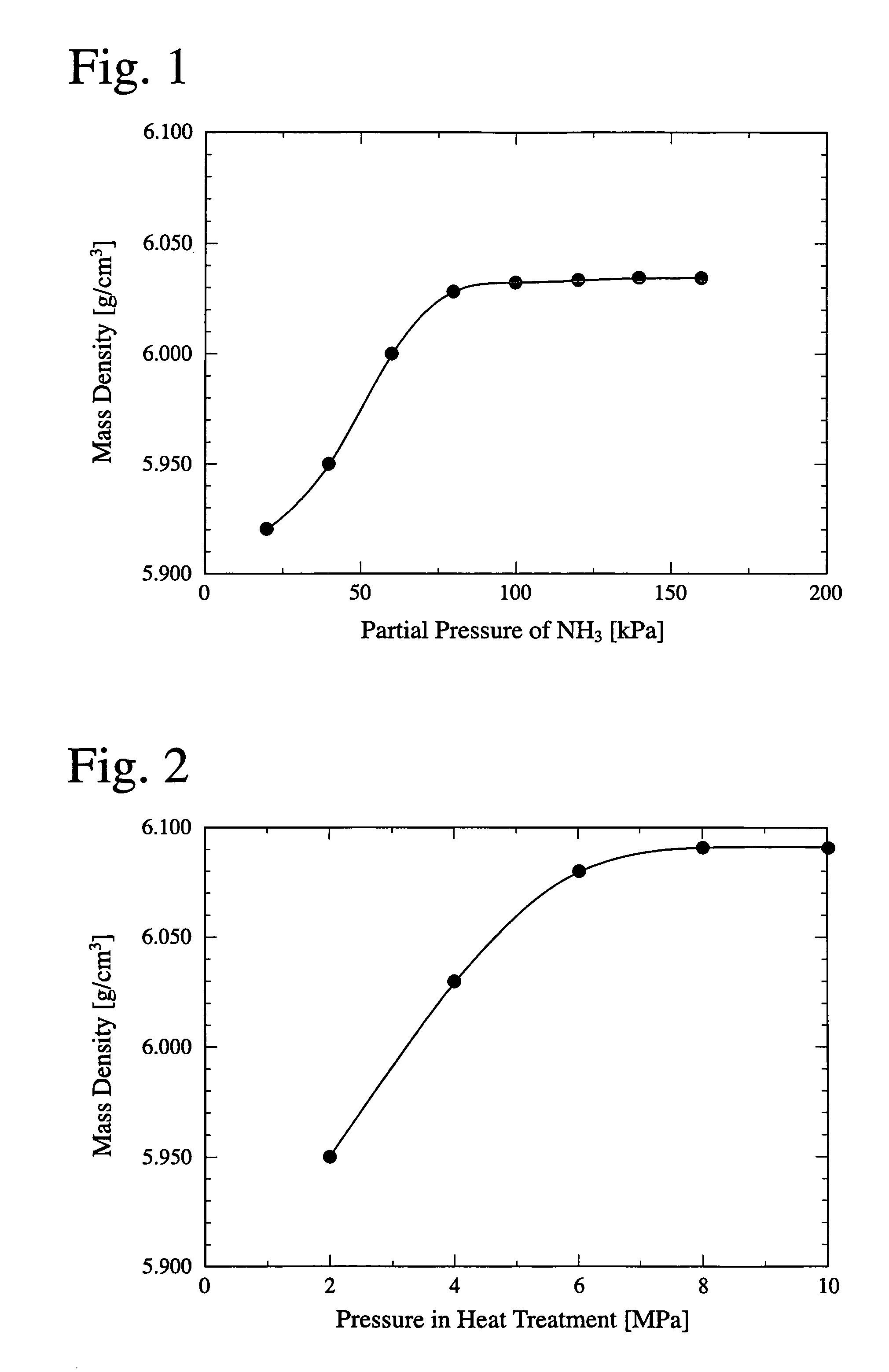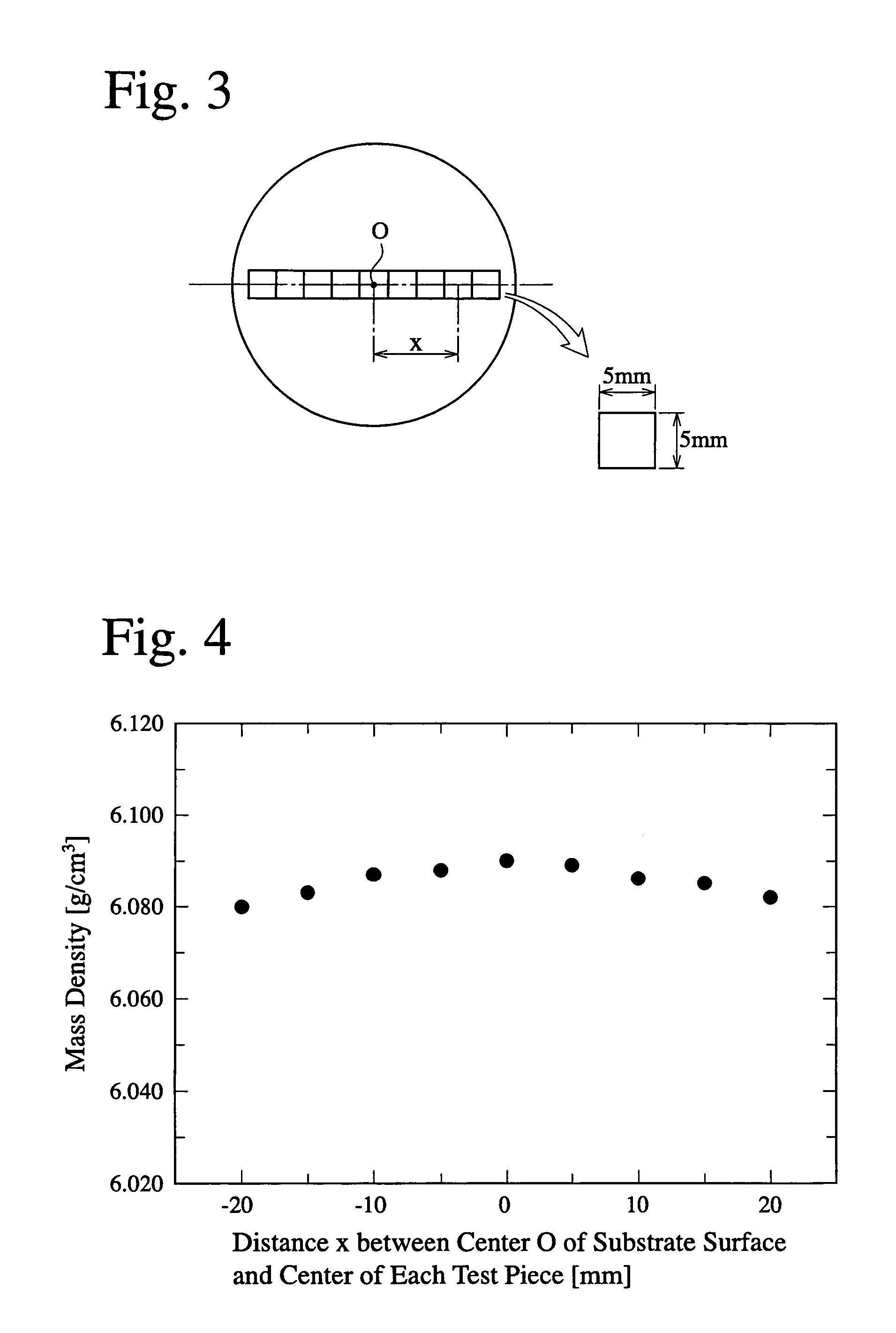Nitride semiconductor substrate and its production method
a technology of compound semiconductor substrate and semiconductor substrate, which is applied in the direction of polycrystalline material growth, crystal growth process, chemically reactive gas, etc., can solve the problems of large gan single crystals usable for practical applications, large gan single crystals, and inability to provide high-quality single crystals. , to achieve the effect of increasing the mass density of nitride semiconductors, reducing the number of defects, and high mass density
- Summary
- Abstract
- Description
- Claims
- Application Information
AI Technical Summary
Benefits of technology
Problems solved by technology
Method used
Image
Examples
example 1
[0045]A 300-nm-thick GaN layer was formed on a 2-inch-diameter sapphire base substrate by a metal-organic vapor phase epitaxy (MOVPE) method. After Ti was vapor deposited on the GaN layer to a thickness of 20 nm, a heat treatment was conducted at 1000° C. for 30 minutes in a mixed atmosphere of H2 and NH3. The heat-treated substrate was charged into an HVPE furnace, in which GaN was grown to a thickness of 500 μm. Using GaCl and NH3 as starting materials of GaN, the partial pressure of NH3 was caused to change in a range of 20–160 kPa as shown in FIG. 1, with the partial pressure of GaCl fixed at 10 kPa. The resultant GaN layer was spontaneously separated from the sapphire base substrate. The resultant GaN plate was mirror-polished on both surfaces, to provide a 2-inch-diameter, 330-μm-thick, transparent, self-supported GaN substrate.
[0046]The mass density of the resultant self-supported GaN substrate measured by an Archimedes' method was, as shown in FIG. 1, 5.920–6.034 g / cm3, abou...
example 2
[0048]The self-supported GaN substrate having a mass density of 6.031 g / cm3, which was obtained in Example 1, was sealed in a high-pressure container, and heat-treated at 800° C. for 96 hours in an NH3 atmosphere. During the heat treatment, the pressure was changed in a range of 2–10 MPa, as shown in FIG. 2. The self-supported GaN substrate taken out of a furnace was measured with respect to a mass density by an Archimedes' method. As a result, its mass density was 5.950–6.090 g / cm3, about 98–100% of a theoretical mass density ρ (x). The results are shown in FIG. 2. In this Example, the effect of increasing a mass density by a heat treatment was obtained at a pressure higher than 4 MPa, and saturated substantially at about 8 MPa. Specifically, the mass density at 8 MPa was 6.085 g / cm3, about 99.9% of a theoretical mass density ρ (x), nearly 100%.
[0049]Test pieces of 5 mm each were cut out from the self-supported GaN substrate heat-treated at 8 MPa along its diameter, as shown in FIG...
PUM
| Property | Measurement | Unit |
|---|---|---|
| diameter | aaaaa | aaaaa |
| thickness | aaaaa | aaaaa |
| partial pressure | aaaaa | aaaaa |
Abstract
Description
Claims
Application Information
 Login to View More
Login to View More - R&D
- Intellectual Property
- Life Sciences
- Materials
- Tech Scout
- Unparalleled Data Quality
- Higher Quality Content
- 60% Fewer Hallucinations
Browse by: Latest US Patents, China's latest patents, Technical Efficacy Thesaurus, Application Domain, Technology Topic, Popular Technical Reports.
© 2025 PatSnap. All rights reserved.Legal|Privacy policy|Modern Slavery Act Transparency Statement|Sitemap|About US| Contact US: help@patsnap.com



